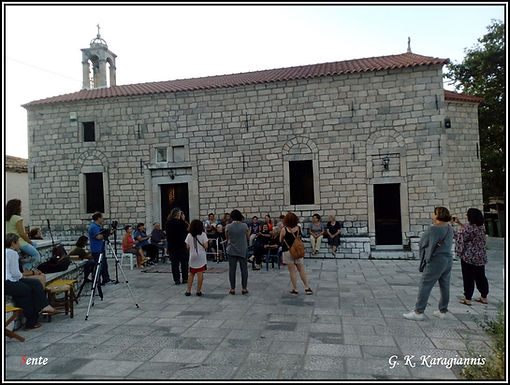
Doliana in Arcadia was first mentioned as a settlement in the Venetian Census of 1700 (Census of the Population of the Peloponnese by the Venetians, Vasilis Panagiotopoulos, 1985). The village belonged to the province of Agios Petros Kynourias and had 58 families and 160 inhabitants. This was the central core of the village, which, according to historical sources and local tradition, originated from Doliana in Epirus (Chronicles of Doliana Kynourias, Issue A’, 1959).
After the liberation from Ottoman rule, Doliana was recorded in two post-independence censuses: one in 1828, which mentions 160 families, and another in 1840, indicating that Doliana had become a third-class municipality with 1,649 inhabitants. This substantial increase in population between 1700 and 1840 is attributed to the settlement of displaced people from the Peloponnese due to the unrest that followed the failed 1769 uprising, known as the Orlov Revolt. Over time, during the second period of Ottoman rule, families began to return from the places they had sought refuge, seeking permanent settlement. Ano Doliana (Upper Doliana) seems to have received a large number of homeless people.
Geographically, Ano Doliana is located in a mountainous area at an altitude of 1,050 meters, with cold winters and cool summers. Most inhabitants were initially shepherds, but gradually turned to agriculture. The harsh winter climate forced the villagers to seek a milder location for the cold months. They eventually settled on the southern slopes of Mount Zavitsa and the valley of the Tanos stream. There they found many caves which, along with makeshift huts, served as the first dwellings of the Dolianites. In this way, Doliana became a dual-settlement village: everyone lived below in winter and above in summer. The distance between Upper and Lower Doliana was a seven-hour walk!
The move to the winter settlement took place before the Revolution, as the 1840 census refers to Lower Doliana (Kalyvia Dolianon) and the auxiliary settlements of Artsina (Prosilia), Kaminari, and Tavernaria.
Doliana gained glory through two victorious battles during the Greek War of Independence. The first took place on May 18, 1821, when Nikitaras crushed Kehayabeis’s army. The second occurred on July 9, 1825, when Ypsilantis defended valiantly, forcing the Egyptian general Ibrahim to move toward Arachova instead of attacking the Greek camp at Vervena, which he had planned to destroy.
However, on May 11, 1826, Ibrahim set fire to the entire village of Upper Doliana. At that time, the sacred church of the village’s patron saint, Saint George, was burned down. In the 1828 census, only the Church of the Dormition of the Virgin is mentioned—no reference to St. George—suggesting that the ruined structure was ignored by the census-taker.
In 1833, the Church of Saint George was rebuilt, likely using marble from Doliana to restore the ruined wall, explaining the unusual thickness of the current structure.
This treasured landmark of the village, housing the miraculous icon of St. George, attracted the covetous interest of residents from a neighboring village. Taking advantage of the Dolianites’ absence during the winter months spent in Lower Doliana, they stole the icon and hid it in a basement in their village. Then, Konstantinos Papantonis—the father of Ilias Papantonis (1868–1942) and grandfather of Grigorios Papantonis (1907–1978)—had a dream in which the horse-mounted Saint told him where the icon was hidden. The Dolianites rushed to the other village, recovered the cherished heirloom, and decided that every autumn, when moving to Lower Doliana, they would bring the icon with them to be hosted in the Church of Saint Nicholas. In spring, upon returning to the mountain village, the icon would be brought back to its original home.
This biannual tradition of moving the icon continues to this day, with the vibrant participation of Dolianites and devout visitors from other villages.
Based on the ages of the Papantonis family members mentioned, it is believed that this tradition began shortly after 1850.
August 2019
Stylianos Papantonis
Retired Teacher
Since August 2020, with the support of the social cooperative enterprise 5ente, volunteers, and local authorities, the tradition has been officially registered in the National Inventory of Intangible Cultural Heritage of Greece.
Learn more: https://ayla.culture.gr/metafora-eikonas-agiwrgi-anw-katw-doliana/
Watch the first edited footage for the upcoming documentary on this tradition: https://youtu.be/1JXJYuvSctE













































